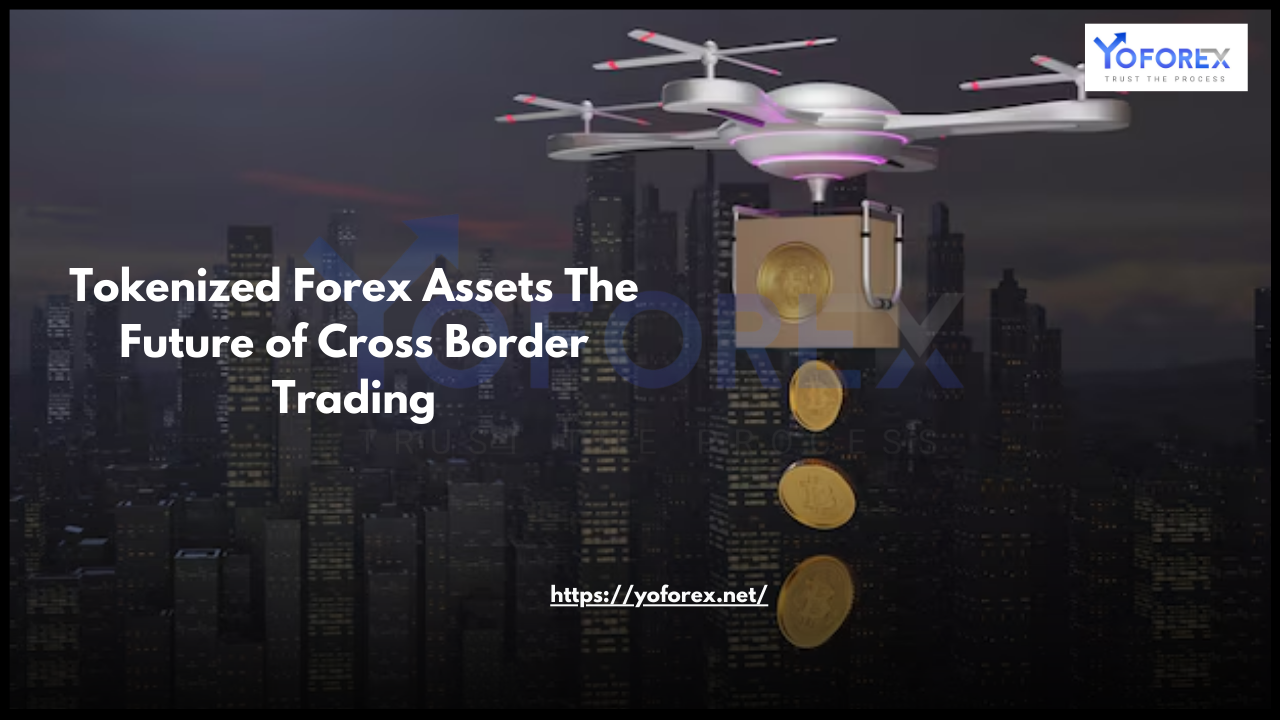The foreign exchange (forex) market is the largest financial market in the world, with a daily trading volume exceeding $7.5 trillion. Traditionally, forex trading has relied on centralized institutions, intermediaries, and complex settlement processes. However, the rise of blockchain technology and tokenized assets is revolutionizing this landscape. Tokenized forex assets have emerged as a game-changing innovation that enhances efficiency, security, and accessibility in cross-border trading. This blog explores the concept of tokenized forex assets, their benefits, challenges, and their potential to reshape global financial markets.
What Are Tokenized Forex Assets?
Tokenized forex assets represent fiat currencies in the form of blockchain-based tokens. These digital representations of traditional currencies (such as USD, EUR, JPY, and GBP) are issued and traded on decentralized platforms, allowing instant, borderless transactions. Tokenized forex assets leverage blockchain’s transparency and immutability to provide a more efficient alternative to conventional forex trading.
Tokenized forex assets can be categorized into two main types:
- Stablecoins – Cryptocurrencies pegged to fiat currencies (e.g., USDT, USDC, and DAI).
- CBDCs (Central Bank Digital Currencies) – Digitized national currencies issued by central banks.

How Tokenization Works in Forex Trading
Tokenization of forex assets involves the creation of digital tokens backed by real-world fiat currencies. This process typically follows these steps:
- Collateralization – A trusted entity (such as a regulated financial institution) holds the equivalent amount of fiat currency in reserves.
- Token Issuance – Digital tokens are minted on a blockchain, representing the fiat currency.
- Trading and Settlement – These tokens can be traded on decentralized exchanges (DEXs) or centralized platforms, enabling near-instant transactions.
- Redemption – Traders can convert tokens back to fiat currency through issuers or exchanges.
Benefits of Tokenized Forex Assets
1. Faster and More Efficient Transactions
Traditional forex transactions require intermediaries such as banks and clearing houses, leading to settlement delays. Tokenized forex assets enable near-instant transactions, reducing settlement times from days to seconds.
2. Lower Costs
Forex trading involves various fees, including brokerage fees, spreads, and transaction costs. Blockchain-based trading significantly reduces costs by eliminating intermediaries and automating settlement through smart contracts.
3. Greater Transparency and Security
Blockchain technology provides an immutable ledger of transactions, ensuring transparency and reducing fraud. Tokenized forex assets leverage cryptographic security, minimizing the risks associated with traditional forex trading.
4. Enhanced Accessibility
Tokenized forex assets allow traders worldwide to access forex markets without the need for traditional banking infrastructure. This is particularly beneficial for unbanked populations and emerging markets.
5. Improved Liquidity
By tokenizing fiat currencies, forex traders can access decentralized liquidity pools, reducing slippage and improving price stability.
6. Programmable Money
Smart contracts enable automated forex trading strategies, reducing human intervention and enhancing efficiency. Traders can set predefined conditions for executing trades, reducing the risk of errors.
Challenges and Risks of Tokenized Forex Trading
1. Regulatory Uncertainty
Governments and financial regulators are still evaluating the implications of tokenized forex assets. Compliance with anti-money laundering (AML) and know-your-customer (KYC) regulations remains a challenge.
2. Price Volatility
While stablecoins aim to maintain a 1:1 peg to fiat currencies, fluctuations can occur due to market demand, reserve management, and external factors.
3. Security Concerns
Blockchain technology is generally secure, but risks such as smart contract vulnerabilities, exchange hacks, and fraud still exist. Ensuring robust security measures is crucial for mainstream adoption.
4. Interoperability Issues
Different blockchain networks operate independently, leading to fragmentation in the forex market. Efforts to improve cross-chain interoperability are essential for seamless tokenized forex trading.
5. Trust and Adoption
Tokenized forex assets require broad acceptance from banks, financial institutions, and traders. Building trust in digital currencies remains a key hurdle to overcome.
The Role of DeFi and Institutional Adoption
Decentralized finance (DeFi) platforms are at the forefront of tokenized forex trading. Automated market makers (AMMs), decentralized exchanges, and yield farming protocols allow users to trade forex assets in a permissionless manner. Additionally, traditional financial institutions are exploring tokenized forex solutions to enhance cross-border payments and streamline operations.
Major players such as Visa, Mastercard, and JPMorgan are investing in blockchain-based payment solutions, signaling growing institutional interest in tokenized forex assets. Central banks worldwide are also experimenting with CBDCs, which could further legitimize digital currencies for forex trading.
The Future of Tokenized Forex Assets
Tokenized forex assets have the potential to revolutionize global trade and finance. As regulatory frameworks evolve and blockchain technology matures, we can expect increased adoption across institutional and retail markets. Here are some key developments to watch:
- Greater Regulatory Clarity – Governments are working on clear guidelines for digital assets, which will enhance trust and adoption.
- Integration with Centralized Finance (CeFi) – Hybrid models combining traditional finance with decentralized solutions will emerge.
- Improved Cross-Chain Solutions – Interoperability protocols will enable seamless tokenized forex trading across multiple blockchain networks.
- Mainstream Institutional Participation – Banks and financial institutions will integrate tokenized forex solutions into their operations.
- CBDC Expansion – More central banks will launch digital currencies, paving the way for mainstream tokenized forex trading.
Conclusion
Tokenized forex assets are reshaping the global forex market by offering faster transactions, lower costs, increased transparency, and improved accessibility. Despite challenges such as regulatory uncertainty and security concerns, the benefits of tokenized forex trading outweigh the risks. As blockchain technology continues to advance, tokenized forex assets will play a crucial role in the future of cross-border trading.

